On View
A Show in Munich Reveals Intimate and Unusual Works by Jackson Pollock (And, No, They’re Not Paintings)—See Them Here
Drawn from his family's collection, the exhibition includes drawings, doodles, sculpture and even screen-prints.
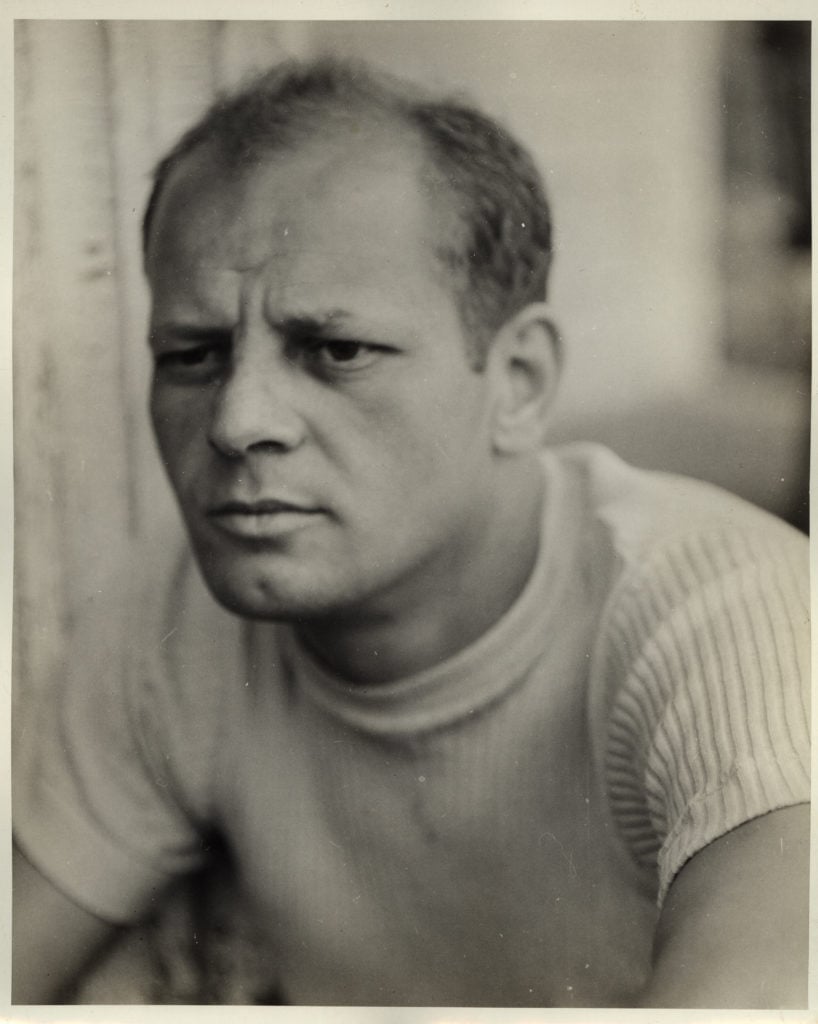
Drawn from his family's collection, the exhibition includes drawings, doodles, sculpture and even screen-prints.

Kate Brown

When you think of Jackson Pollock, most likely his big poured paintings come to mind. But, like many artists, the abstract expressionist pioneer worked across different media, all the while becoming known for only one of them. A new exhibition in Munich, culled from Pollock’s family’s collection, is hoping to shed light on the farther corners of his diverse practice beyond his bravura drip canvases.
The exhibition, a collaborative effort between American Contemporary Art Gallery in Munich and Jason McCoy Inc. in New York, brings together a highly personal exhibition of subdued works by Pollock, many of which are on view for the first time. There is only a single painting on show in “Jackson Pollock Simply Is: Up Close and Personal” (on view until March 30, 2019), as the Munich gallery, which manages European representation of the McCoy family estate (which is Pollock’s father’s birth name), opted to focus on his drawings, prints, and sculpture. It includes intimate photographs taken by Pollock and his family members.
What ties all the work together is what the gallerist McCoy has called “energy made visible.” Indeed, Pollock’s incredibly expressive and energetic style, as well as his capability to capture movement in two dimensions, is ever-clear in his doodles within a notebook of Japanese mail stationary, for example. Each page is like a casually and effortlessly made case study—a few of them include friends’ and contacts’ addresses and telephone numbers that he jotted down while he was drawing with ink.
“The name Jackson Pollock immediately conjures some idea of the ‘poured’ paintings that are his signature look,” writes McCoy in the exhibition catalogue. “That style is not however the only kind of imagery that he created.” Figuration jumps out of the several screen prints, doodles, and engravings on view; and as Pollock famously said in 1956, “when you’re painting out of your unconscious, figures are bound to emerge.”
In fact, McCoy is also Pollock’s nephew. And his uncle was known to be a family man who collaborated closely with his several siblings, including McCoy’s father Sanford McCoy. (The brothers’ father, LeRoy Pollock, had been adopted by a family named Pollock. McCoy was his birth name, which some of his children opted to take on.) One of the most intensely personal works in the Munich show captures Jackson Pollock’s deep affection for his father within a rare sculpture that he made after his death. Unlike his other works, Head is completely still and peaceful, and as small as a stone that you could hold in your hand, like a totem. Perhaps unsurprisingly, it’s not for sale.
The show also includes some personal objects, including a portrait of the artist taken by Jason McCoy’s father, Sanford. There there are two small stools owned by Pollock and used in his studio that he shared with his wife and fellow artist Lee Krasner Pollock, which bookend the show. They are splattered with paint, like negative reliefs of all the paintings he created in his longtime studio in East Hampton. They, like the other works on view, stand as quiet observers and participants in his boisterous painting practice that made him a beacon of modern art.
See the works from “Jackson Pollock Simply Is: Up Close and Personal” at American Contemporary Fine Art Gallery in Munich, on view until March 2019.
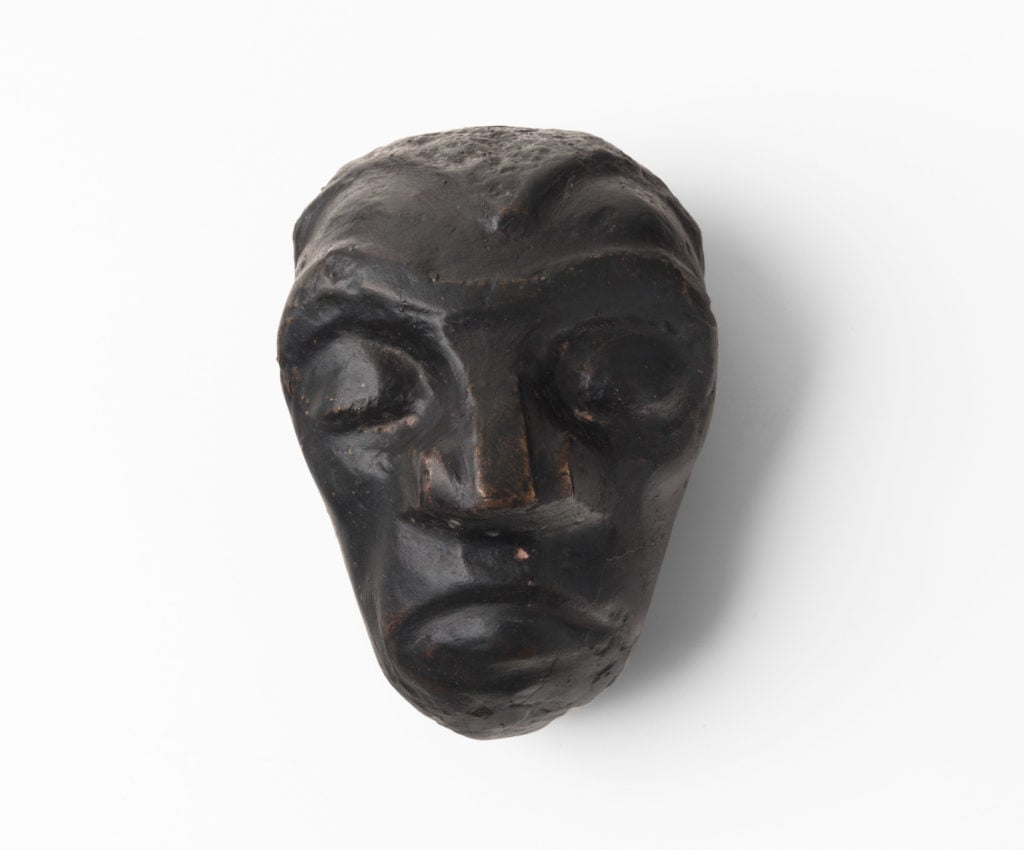
Bronze cast from the sculpture Stone (circa 1930-33). Courtesy American Contemporary Art Gallery, Munich.

Silkscreen by Jackson Pollock (1951). Courtesy Contemporary Art Gallery, Munich.
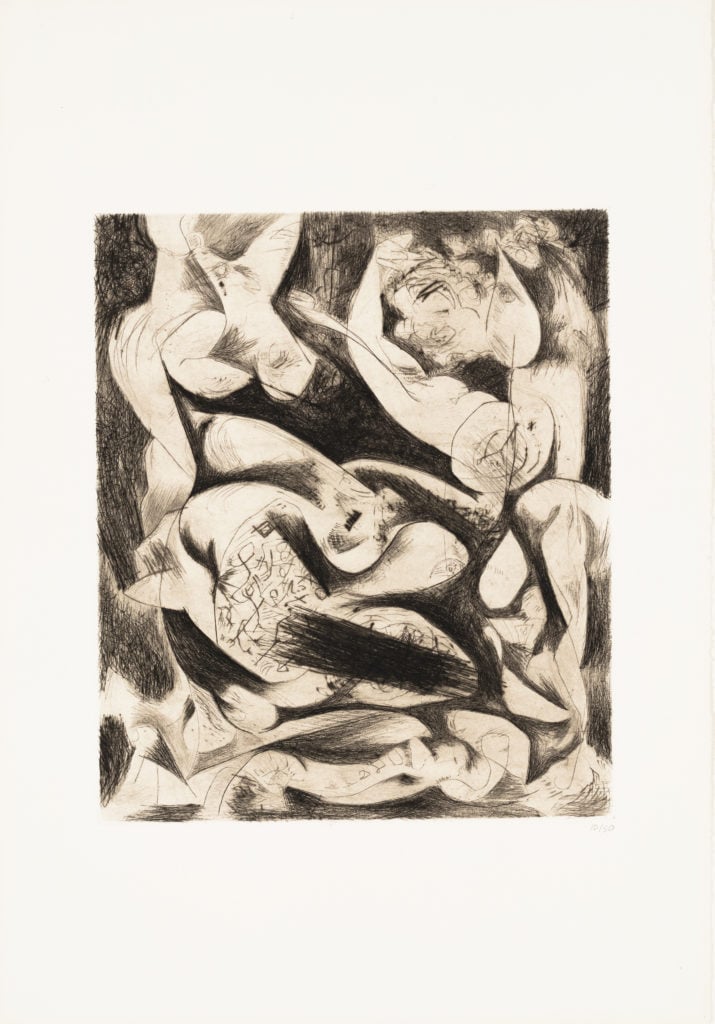
Untitled (c 1944) engraving and drypoint. Courtesy American Contemporary Art Gallery, Munich.
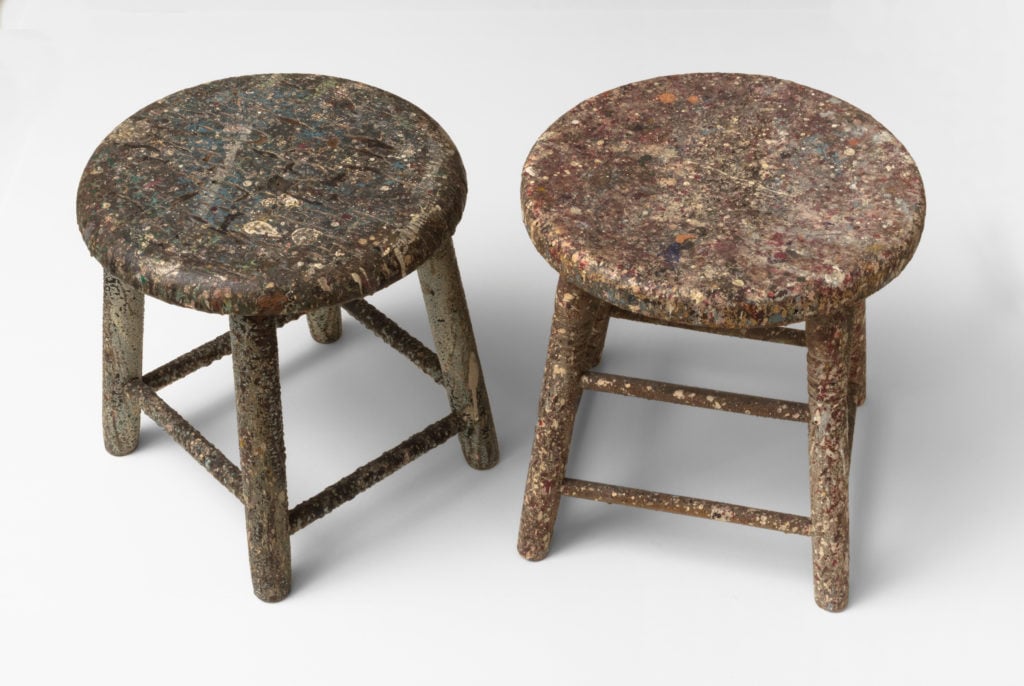
Stools from the studio of Jackson Pollock and Lee Krasner. Springs, East Hampton. Courtesy American Contemporary Art Gallery, Munich.
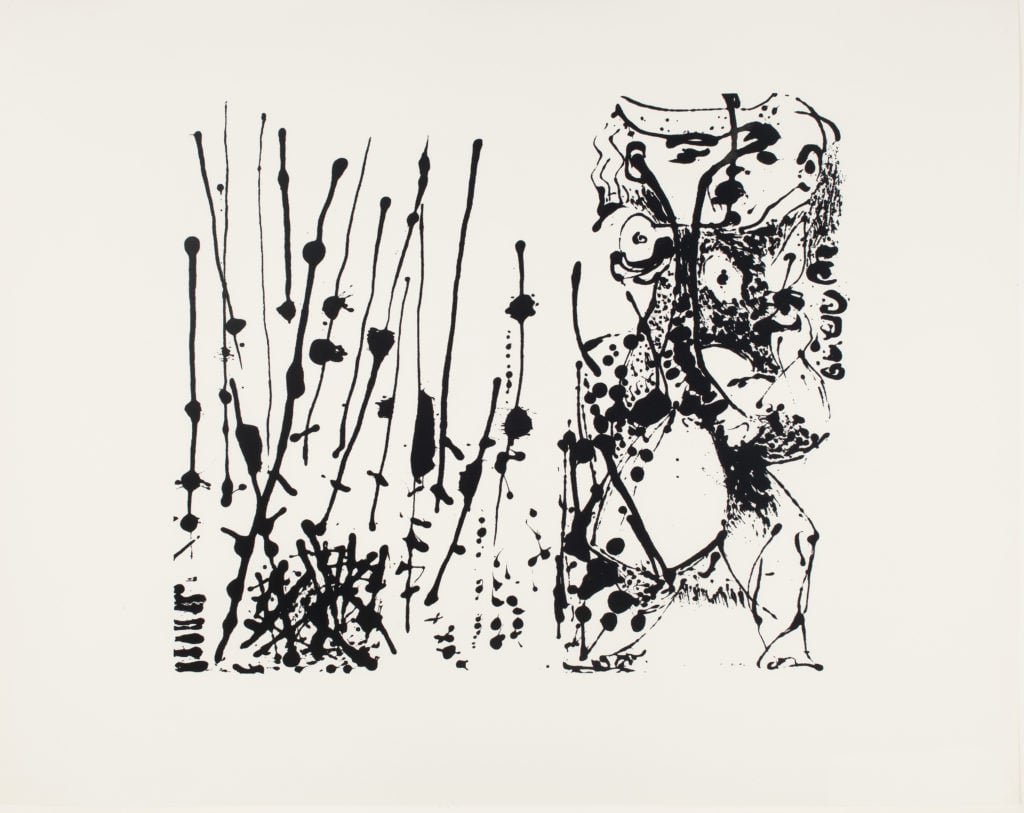
Silkscreen by Jackson Pollock. Courtesy American Contemporary Art Gallery, Munich.
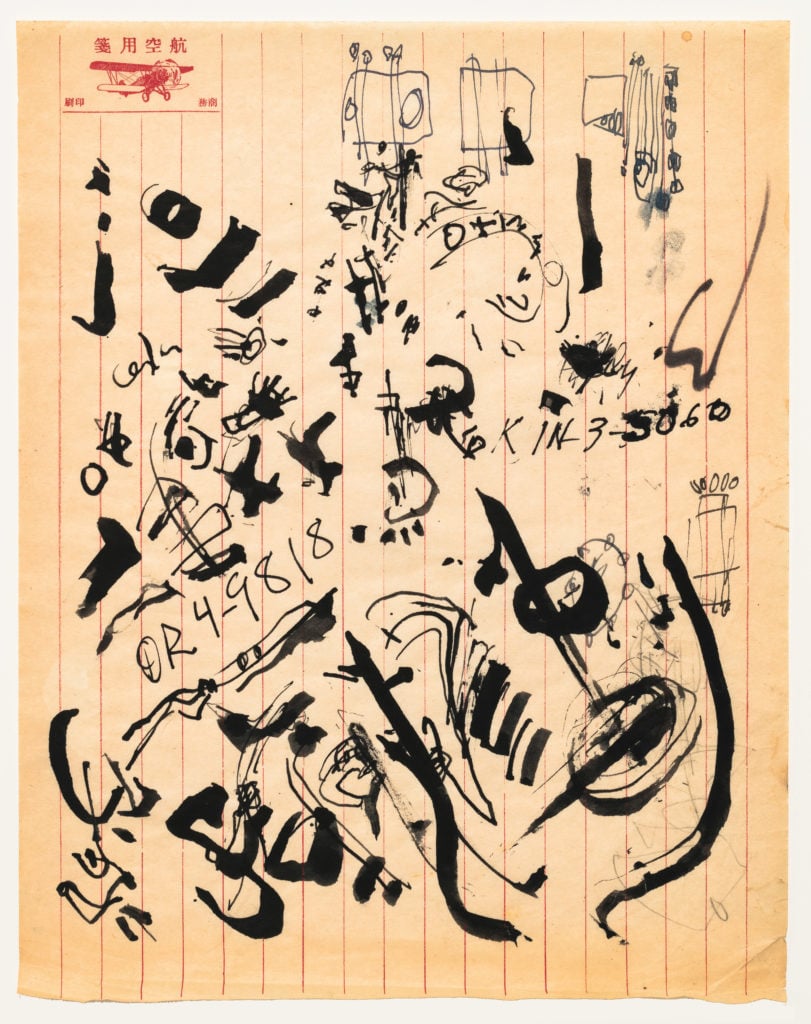
Untitled (circa 1950-54). Pencil and ink on Japanese commercial airmail. Courtesy American Contemporary Art Gallery, Munich.
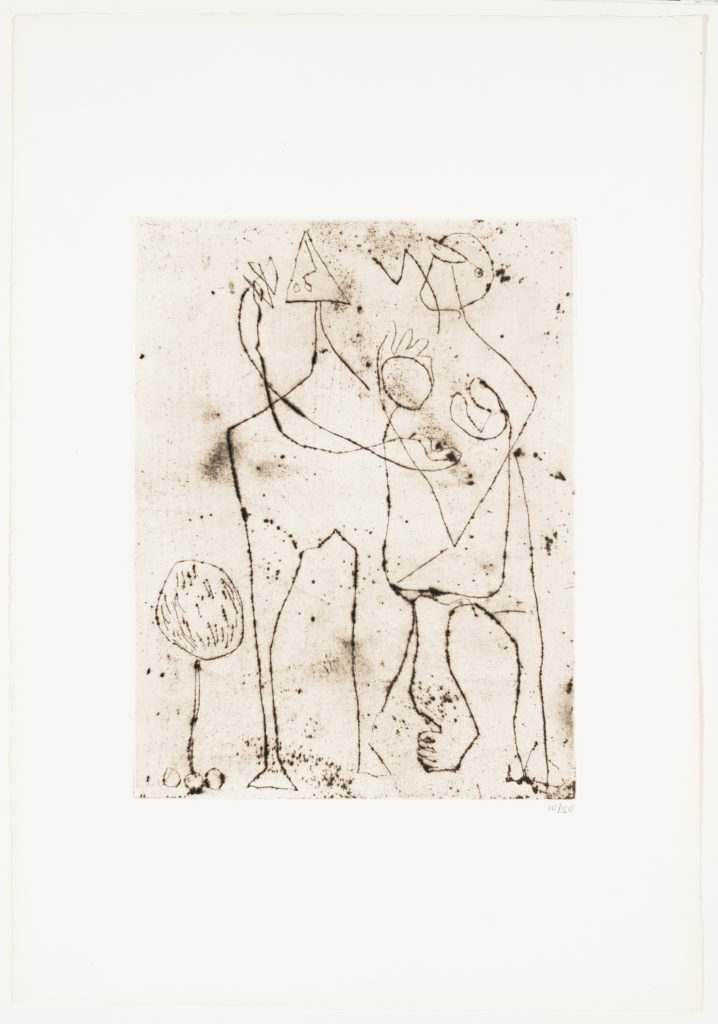
Untitled (c 1944) engraving and drypoint. Courtesy American Contemporary Art Gallery, Munich.
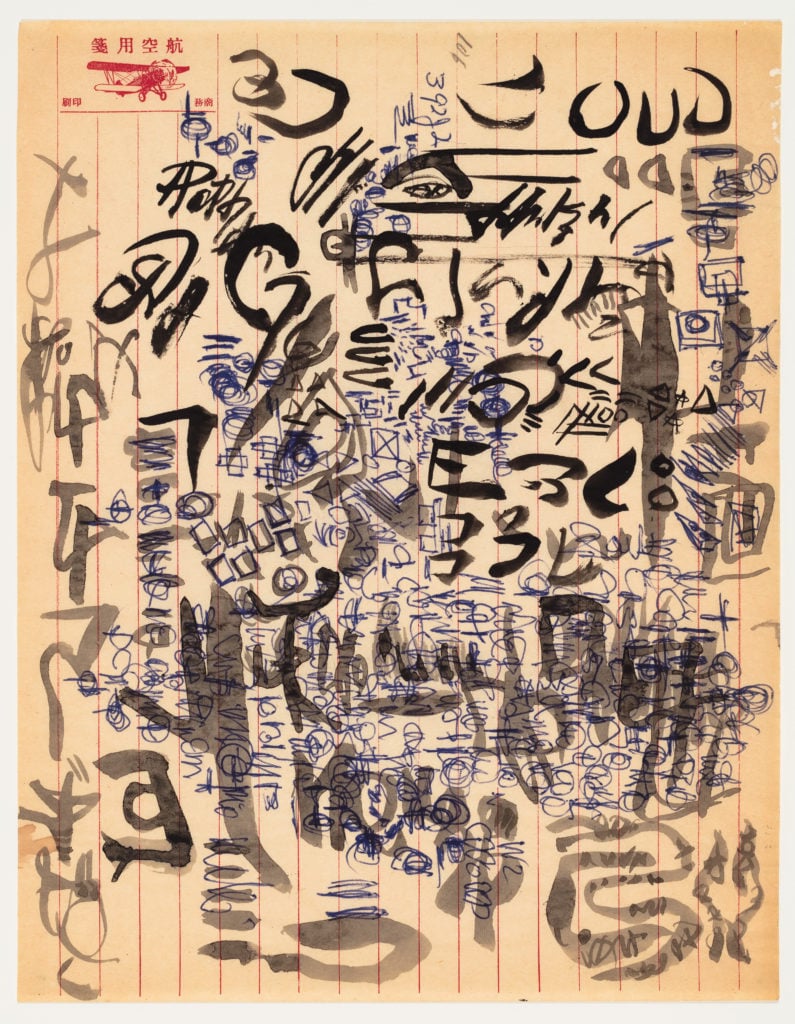
Untitled (circa 1950-54). Ink wash and blue ballpoint pen on Japanese commercial stationery. Courtesy American Contemporary Art Gallery, Munich.